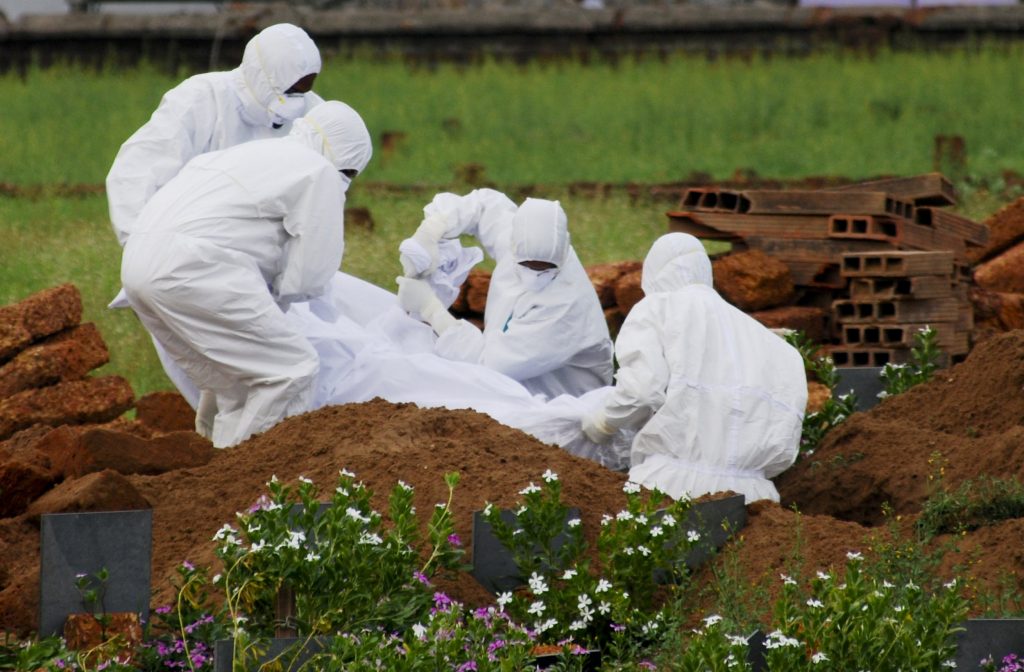“Sajeesh, I am almost on the way. I don’t think I can meet you again….”
Lini Puthussery, nurse and mother of two in Kerala, said in a poignant letter written to her husband shortly before she died from Nipah virus infection.
Nipah virus (NiV) is a newly emergent zoonotic pathogen of the family Paramyxoviridae it is an enveloped negative-strand RNA paramyxovirus (gunus henipavirus) that can cause rapid, fatal respiratory and neurological disease in both humans and animals.
-
History of Nipah Virus:
The Nipah virus escaped obscurity as a nameless animal virus who is named Nipah after a river in the town where the first victim lived, Nipah virus assured itself a place in the history by killing 105 pig farmers and bowl over a billion dollar swine industry in Malaysia in less than 10 months.
In the 1998- 1999, Nipah virus caused a relatively mild disease in pigs, but nearly 300 human cases with over 100 deaths were reported. Since this outbreak, no subsequent cases (in neither swine nor human) have been reported in either Malaysia or Singapore.
In 2001-2004, NiV was again identified as the causative agent in an outbreak of human disease occurring in Bangladesh and neighboring west Bengal. The virus has the same genetic sequencing but a different strain from the one identified in 1999. In the same period, another outbreak was identified retrospectively in Siliguri, India with reports of person-to-person transmission in hospitals (nosocomial transmission). Unlike the Malaysian NiV outbreak, outbreaks occur almost once a year in Bangladesh and have been reported several times in India.
In 2012 it appeared and it’s been identified again in Comilla and Rajbari
On 19 May 2018, a Nipah virus disease (NiV) outbreak was reported from Kozhikode district of Kerala, India. This is the first NiV outbreak in South India, consumption of raw date palm sap contaminated with infectious bat excretions as a route of transmission.
-
Transmission:
According to the central disease control (CDC), Transmission of Nipah virus to humans may occur after direct contact with infected bats, infected pigs, or from other NiV infected people
In Malaysia and Singapore, humans were apparently infected with Nipah virus only through close contact with infected pig.
Person-to-person transmission of Nipah virus in Bangladesh and India is regularly reported.
Transmission also occurs from direct exposure to infected bats.

-
Pathology:
studies revealed the pathology of this disease to be vasculitis-induced thrombosis causing ischemia and infarction. Multi-organ necrotizing vasculitis and syncytial formation were characteristic. This was in the central nervous system especially in the brain (encephalitis),where a diffuse small blood vessel vasculitis and lytic necrosis were evident in the cerebral cortex associated with infection of endothelial cells.
-
Signs and Symptoms:
After exposure and an incubation period of 5 to 14 days, illness presents with 3-14 days of Fever, headache, dizziness, and vomiting, followed by reduced levels of consciousness, brainstem dysfunction and mental confusion. It can progress to coma within 24-48 hours.
Segmental myoclonus, areflexia, hypotonia, hypertension, and tachycardia were also reported.
Some patients have a respiratory illness during the early part of their infections, and half of the patients showing severe neurological signs showed also pulmonary signs.
According to the (CDC) About 40% of those patients who entered hospitals with serious nervous disease died from the illness.
People who survived Nipah virus would suffer from long-term consequences like persistent convulsions and personality changes
Latent infections with reactivation of the virus and death have also been reported months and even years after exposure.
-
Treatment and Prevention:
There is no effective therapy, Treatment is supportive.
Airway protection should be initiated with the onset of neurologic decline.
A recently published open-labeled controlled study done during the outbreak reported a 36% reduction in mortality with the use of ribavirin. This study used decremental doses of oral or intravenous ribavirin for 10 days.
Antithrombotic agents have been used based on pathologic findings of ischemia and infarction in autopsy specimens, but have not been studied.
The most crucial way of limiting future human disease is early recognition of illness in intermediate animal hosts.
Author: Ghada S. Elshatiti


